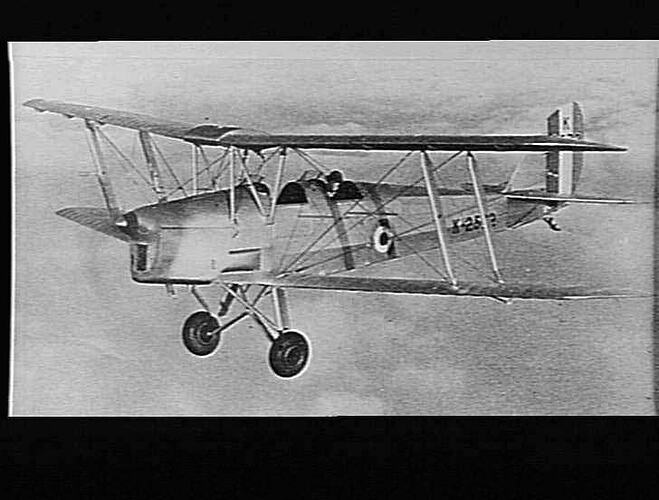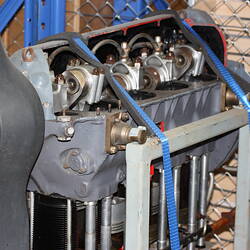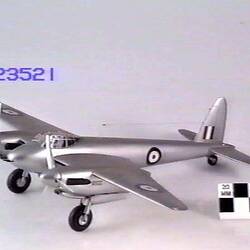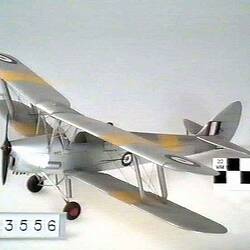First flown in September 1931, the Tiger Moth biplane is one of the most recognised and important aircraft in the history of powered flight. Like the Douglas DC-3 its significance is the result of both civilian and military use. The DH82 Tiger Moth was based on the proven DH60 Gipsy Moth design but used a new wing layout featuring slightly swept back wings which allowed the front cockpit to be unobstructed for an emergency exit by parachute. Unlike the DH60, the wings did not fold back for storage and transport. The Gipsy engine was inverted to provide a clear view over the nose, essential for flying training. The Tiger Moth became well established as a training aircraft in flying clubs in the UK and Australia. The DH82A featured the improved 130 horsepower Gipsy Major engine and was used by the Royal Air Force from 1934. During the Second World War, the Tiger Moth became the British Commonwealth's main primary training aircraft. It equipped 28 Elementary Flying Training Schools in Britain, Canada, Australia, New Zealand, South Africa and Rhodesia, established as part of the Empire Air Training Scheme.
The first civilian Tiger Moth (VH-UTD) was imported into Australia in 1935. De Havilland Australia began production of Tiger Moths at Mascot, NSW in 1939 following an initial Australian Air Board order for 20 aircraft in November 1938 . Most components for the early aircraft were imported with local production taking over as subsequent orders were received following the outbreak of war. Due to uncertainty of supply from Britain, the Gipsy Major engine was also manufactured in Australia by General Motors-Holden's Ltd under a licence held by the Commonwealth Aircraft Corporation (CAC). This was the first engine of any sort to be built by the company and was fitted to most of the 1070 Tiger Moths built in Australia. The Tiger Moth remained as the RAAF's primary trainer until the mid-1950s when it was replaced by the CAC Winjeel. For many years after the Second World War, Tiger Moths equipped civilian organisations such as the Royal Victorian Aero Club and many were converted to crop-spraying configuration as the aerial agriculture industry established itself before the production of specialised aircraft. The Tiger Moth remains a popular recreational aircraft and many have been restored in recent years.
More Information
-
Keywords
-
Authors
-
Article types



